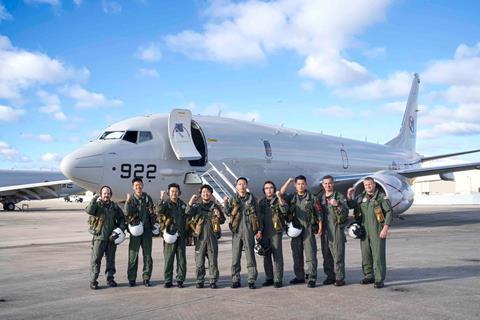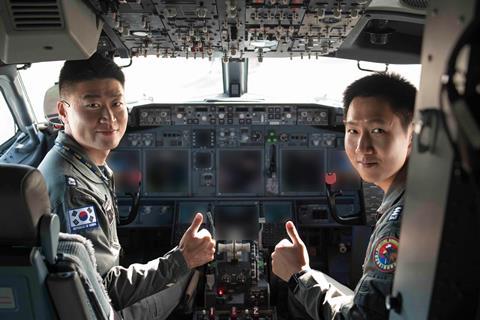South Korea’s first three Boeing P-8A Poseidon maritime patrol aircraft have arrived in the country, with service entry planned for 2025.
Prior to their arrival from the USA, where South Korean navy crews have been training with US Navy (USN) colleagues, the three aircraft were greeted by the type they will replace, the Lockheed P-3C Orion.

The aircraft landed at South Korea’s Pohang Air Station. The navy’s three final examples are set to arrive on 30 June.
The navy says that the P-8A will play a key role in detecting both surface vessels and submarines, observing that the aircraft’s X-band radar “can detect sea targets up to hundreds of [kilometers] away”.
Finding and tracking North Korean submarines will be a key priority for the P-8A fleet.
It also notes that the type is operated by the USN, which ensures interoperability with Seoul’s key ally.
The type will enter South Korean service in mid-2025 following an operational performance assessment.

South Korea faces a growing submarine threat owing to the proximity of rival North Korea, which is developing the capability to launch ballistic missiles from submarines. China’s submarine fleet has also grown strongly in line with Beijing’s massive naval build-up in recent years.
Cirium fleets data indicates that South Korea’s current fixed-wing anti-submarine warfare capability is filled by 16 P-3Cs, with an average age of 43.3 years.
These aircraft had been delivered in two lots. In the late 2010s, the eight older Lot 1 P-3Cs were upgraded by Korean Air to the Lot 2 standard, with improved avionics and sensors.











































